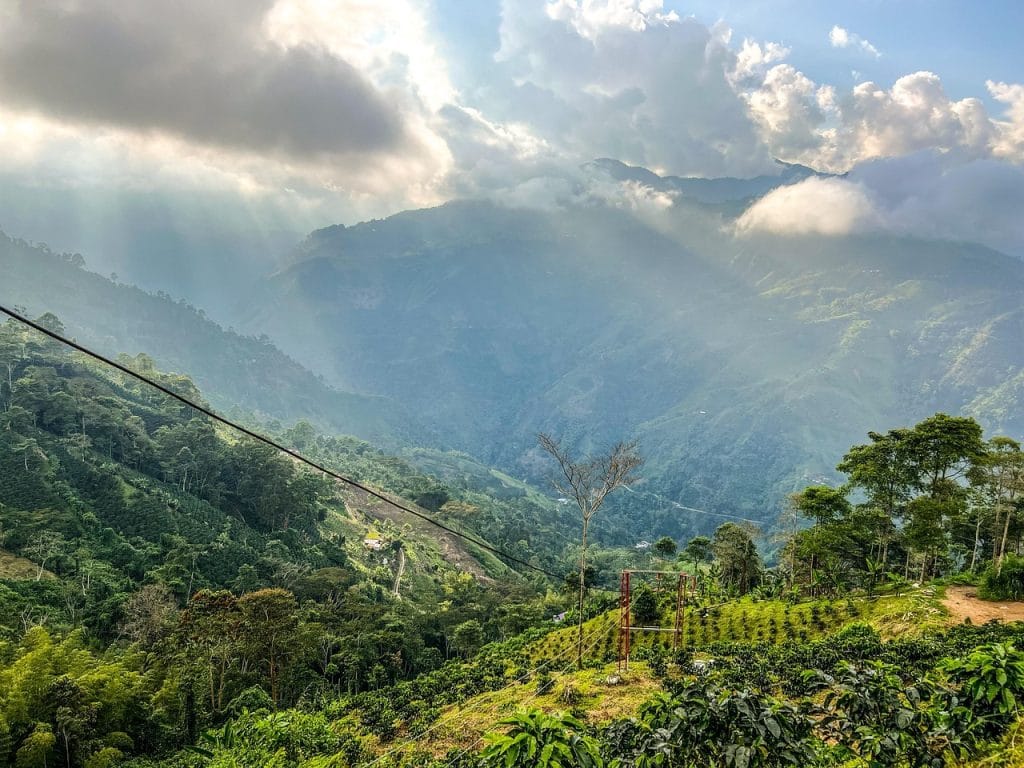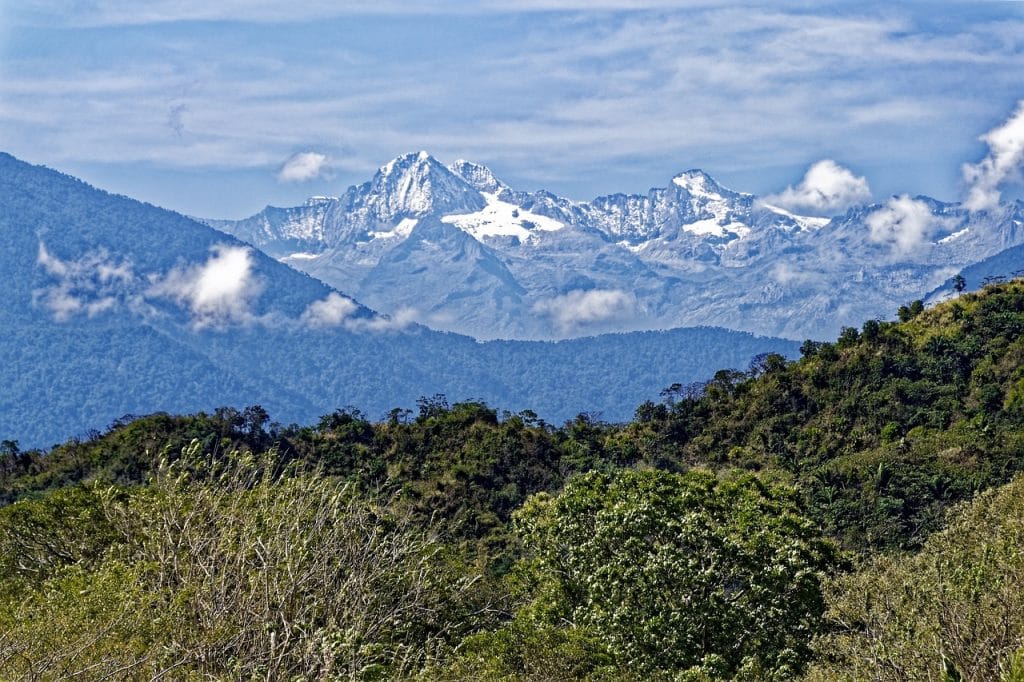At CBD COP16, global leaders, conservationists, and policymakers will come together to drive transformative change by integrating gender equality into biodiversity conservation. Hosted at the IUCN Pavilion on October 27, 2024, this event will highlight the crucial role of women in protecting and restoring ecosystems, ensuring that conservation efforts are inclusive, effective, and sustainable.
Key highlights:
- Gender-Responsive Conservation: Recognizing women as key agents in biodiversity protection, from sustainable agriculture to climate adaptation
- Bridging the Funding Gap: Mobilizing resources for gender-inclusive conservation efforts through innovative finance solutions.
- Local and Indigenous Leadership: Elevating the voices of grassroots and Indigenous women who drive community-based conservation.
- Policy Action & Collaboration: Strengthening global commitments to Target 23 of the CBD Gender Plan of Action to ensure gender equity in environmental decision-making.
Watch the full recording below, from 3:36:00 – 5:08:17
The Convention on Biological Diversity COP16, held at the IUCN Pavilion, served as an ideal platform for advancing discourse surrounding the integration of gender equality within global conservation and climate strategies. This event was designed to propel the objectives outlined in Target 23 and Objective 1 of the Gender Plan of Action, aiming to weave gender considerations into biodiversity impact strategies. The conference brought together a diverse array of leaders, policymakers, and activists committed to fostering gender-responsive conservation efforts. Through a series of engaging sessions, the event explored innovative financing mechanisms and actionable strategies to ensure that gender equality is not only a guiding principle but a practical reality in biodiversity conservation efforts worldwide.
The discussions at COP16 were structured around two pivotal sessions: financing gender-responsive conservation, and taking action on the ground. These sessions were meticulously curated to address both the strategic and operational dimensions of gender integration in conservation. The first session highlighted the role of international finance in supporting gender equality initiatives, featuring insights from global leaders in environmental funding. The second session delved into grassroots actions, showcasing practical examples of how gender-responsive strategies are being implemented across various communities. Collectively, these discussions underscored the necessity of a multi-faceted approach to conservation that aligns with gender equality, as well as human rights, setting a robust framework for future initiatives aimed at nurturing resilience, safeguarding livelihoods, and empowering communities through inclusive environmental stewardship.
Session 1: Financing Gender-Responsive Conservation
Opening Remarks:
- H.E. Razan Al Mubarak, President, IUCN
Speakers:
- Bård, Vegar Solhjell, Director General, Norad
- Dr. Adriana, Goncalves Moreira, Lead Specialist for Partnerships, Global Environment Facility
- Ceejay, Girard, Global Partnerships and Sustainable Agriculture, PepsiCo
- Catherine, Wahlen, Natural Resources Officer, USAID
- Céline, Heinbecker, Director of Climate Finance Partnerships, Global Affairs Canada
Razan Al Mubarak (IUCN President) opened the discussion by stressing the need for intentionality in achieving gender-responsive outcomes, emphasising that these outcomes must be deliberately designed and mainstreamed into biodiversity actions. She linked gender equity to international policy compliance, advocating for women’s safety and leadership as integral to achieving global biodiversity goals.
“Like you’ve heard me say, I’m incredibly proud that IUCN is advancing this agenda, and looking, really, to listen to the panelists on how we as a community can tailor support to address gender-based violence risks. Ensuring that women are not just safe, but really empowered to shape the future of nature conservation and climate action.”
Bård Vegar Solhjell (Director General of Norad) highlighted the link between education and environmental outcomes, advocating for economic empowerment as a tool for equity. He noted that cash transfers to women lead to better conservation and development results and addressed the global nature of gender-based environmental violence.
“Among the most important things you can do, to do climate adaptation well, is girls’ education. If girls and women are educated, different choices will be made in a community. We also know that cash transfers, when directed to women, often are more effective than when not. So simply looking at the evidence, the evidence is also behind it.”
Ceejay Girard (PepsiCo Global Partnerships) shared insights on PepsiCo’s success in sustainable agriculture, noting that women’s adoption of climate-smart farming practices exceeded expectations. He emphasised the importance of internal culture shifts and external partnerships in achieving gender equality in supply chains.
“There is a business case. It’s there, it’s evident, we can quantify, we can qualify it, and we can put it into stories. Whatever our business needs, we finally have that evidence base to provide (it).”
Catherine Wahlen (USAID Natural Resources Officer) revealed the pervasive risks in environmental work, noting that a significant percentage of environmental policy makers encounter gender-based violence (GBV) in projects. She shared success metrics from the RISE Challenge, which unites gender and conservation experts to tackle this systemic crisis.
“It’s really important to work together in this space, it’s not just a gender-based violence or gender issue, it’s really about all of these sectors working together to ensure that no one is left behind and that we maximise the contributions of everyone, for biodiversity results.”
Céline Heinbecker (Global Affairs Canada) outlined Canada’s accountability framework, which shifts women from victims to leaders by tracking their access to resources, voice, and power. She illustrated practical, intersectional climate projects, such as Kenyan women’s seaweed farms that protect coasts, nurture biodiversity, and generate income.
“We wanted to have an initiative that would centre indigenous leadership and the voices of indigenous women, girls, and two-spirit people. The funding from this initiative will flow to indigenous organisations in Canada, who will partner with indigenous organisations abroad.”

Session 2: Taking Action on the Ground
Moderator – Amelia Arreguín Prado, Coordinator, CBD Women’s Caucus
Speakers:
- Gabrielle, Moreau, Youth representative, Métis National Council
- Joyce, Peshu, Gender Officer, Kenya Wildlife Conservancies Association, Kenya
- Ilse, Pelkmans, Researcher, TMG Think Tank
Closing Remarks:
- Astrid, Puentes Riaño, United Nations Special Rapporteur on the Human Right to a clean, healthy & sustainable environment.
Gabrielle Moreau (Youth Representative, Métis National Council) highlighted the transformative impact of bringing Indigenous perspectives into national decision-making. She underscored the importance of self-determined climate and biodiversity actions, illustrating how the Goose Moon Table on Climate Change provides a platform for inclusive environmental decision-making.
“It’s really important that we take indigenous women’s knowledge and we don’t try and shoehorn it into existing frameworks of conservation, but we see it just as relevant in its own right. And we develop ways of conserving nature rooted in indigenous women’s knowledge, rather than (knowledge) rooted in western knowledge with consultations with indigenous peoples on the side.”
Joyce Peshu (Gender Officer, Kenya Wildlife Conservancies Association, Kenya) spoke about integrating gender-based violence considerations into wildlife conservancies in Kenya, and the importance of doing so in enabling women to meaningfully engage, participate and lead in the context of conservancies. She highlighted the link between gender inequality and violence, and its critical role in achieving joint biodiversity and climate goals. Peshu also shared insights into the changes observed at the governance and leadership levels of conservancies.
“These women play a critical role in natural resource management. So we have women that play a role in rangeland restorations, women in the ranger workforce, women who work in ecotourism, women who are leaders and managers in natural resource management. How are they able to fulfill their role if they are experiencing gender-based violence?”
Ilse Pelkmans (Researcher, TMG Think Tank) introduced the women’s land rights tool, Haki Ardi, which utilises technology to address land rights issues. She explained how the tool allows women to report on rights violations safely, while remaining accessible to local women with varying access to technology, and the process in which community organisations are able to get intouch with gender-based violence victims and provide sufficient support.
“It’s not a stand-alone solution, right? It can’t be. I think it’s important to recognise that digital solutions can improve and make life easier for the work that’s already done in an analog structure, but you still need that analog structure to be in place. It doesn’t make sense to develop a tool to make reporting easier if there’s no response.”
Astrid Puentes Riaño (United Nations Special Rapporteur on the Human Right to a clean, healthy & sustainable environment) highlighted the need to integrate human rights, especially gender rights, into conservation efforts to address climate change, biodiversity loss, and pollution. She emphasised the importance of implementing existing legal frameworks and called for systemic changes to tackle these crises. Puentes Riaño stressed the critical role of women in leading these initiatives and the necessity of collaborative efforts to ensure a globally recognised right to a healthy environment.
“It’s very important that when we talk about conservation – including private actors, businesses, the IUCN, and NGOs – we remind (ourselves) that it’s an obligation to respect, protect and guarantee human rights. Both of women, girls, and indigenous peoples.”

Some general issues from the IUCN CBD COP16 Day 7 event that were tackled, included advancing gender equality within the context of climate and conservation solutions. A key theme herein was the integration of gender-responsive approaches into biodiversity actions, emphasising that these outcomes must be deliberately designed and mainstreamed into every aspect of conservation efforts. This aligns with the broader international policy framework, highlighting women’s safety and leadership as non-negotiable for achieving global biodiversity goals.
Another significant theme was the empowerment of women as agents of transformative change. The discussions underscored the importance of recognising women not just as beneficiaries but as leaders and decision-makers in conservation and climate action. This involved addressing systemic issues such as gender-based violence, which poses significant barriers to women’s full participation in environmental sectors.
The event also highlighted the importance of inclusive governance and community-driven approaches, particularly the role of Indigenous knowledge and leadership in achieving biodiversity and climate goals. By emphasising participatory design and collaboration, the discussions aimed to create solutions that are equitable, locally relevant, and globally scalable, ensuring that the benefits of conservation efforts are realised across diverse communities.
